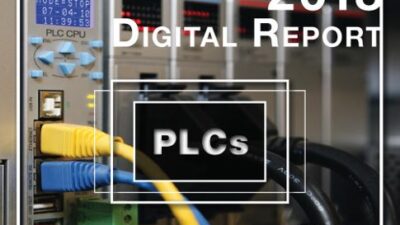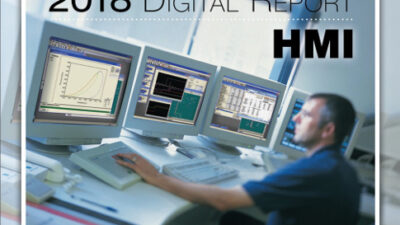Direct part marking and packaging applications are among recent standards-related news. AIM Global, a trade association for automatic identification and mobility, announced that the second Public Review Draft of the AIM Global Direct Part Marking (DPM) Quality Guideline, is available for public review until June 7, 2006.
Direct part marking and packaging applications are among recent standards-related news. AIM Global , a trade association for automatic identification and mobility, announced that the second Public Review Draft of the AIM Global Direct Part Marking (DPM) Quality Guideline, developed by a joint ad hoc committee of members of ANSI MH10 SBC 8 and AIM Global’s Technical Symbology Committee (TSC), is available for public review until June 7, 2006. In separate news, OMAC Packaging Workgroup (OPW) approved new PackAL guidelines, which will be added to the OPW Guidelines for Packaging Machinery Automation.
Direct part marking writes on a surface with dot peening, laser etching, molding, or embossing, but often there’s little or no contrast between the marked elements of a symbol and the background (substrate). Lighting and signal-processing techniques can improve contrast. The quality guideline document addresses perceived deficiencies in the current ISO/IEC 15415 verification standard (Information technology – Automatic identification and data capture techniques – Bar code verifier conformance specification – Part 2: Two-dimensional symbols). DPM symbols that could be read using appropriate readers could not be verified under IEC 15415, which was designed for conventionally printed symbols. Interested reviewers may download the document free from the AIM Global website.Reviewers should send comments to [email protected] by June 7, 2006.
An updated version of the packaging application library guidelines is expected to be released this month. PackAL is an application library of common software elements used in packaging applications developed by the PackSoft subgroup of the OPW. The application library is made up of 23 functions; 13 are machine functions, such as wind/unwind, dancer control, registration, and indexing; 9 are communication functions for horizontal line communications; and 1 is for the PackML machine state model. The library creates a common look and feel in software elements for functionality, communication, and machine organization in packaging machinery.
“Benefits are considerable for machine builders and end-users: the organization of machine communication and commonly used functions facilitates seamless machine programming across control platforms and between machines from different vendors,” according to Gerd Hoppe, CTO, Beckoff Automation N.A., leader of the technical subcommittee for PackSoft. PackAL allows easier scaling between basic and enhanced functions. Also, a compliance statement describes parts of the PackAL Library supported by each vendor’s product. “Horizontal machine integration becomes easier and a common coding platform is maintained for machine builders,” Hoppe says. “End-users are freed from unnecessary programming efforts, gain the ability to quickly understand and maintain machine code and, as a result, can spend more of their valuable time working on process-specific solutions.” At least three vendors (Bosch Rexroth, Siemens, and Beckhoff) have announced PackAL libraries as an add-on to their control platforms. OMAC-The Open Modular Architecture Controls Users’ Group is an affiliate organization of ISA – The Instrumentation, Systems and Automation Society.
For more about packaging automation standards, read ” Make2Pack: Homestretch ” in the digital edition of the “Packaging Automation+Controls” a supplement to Control Engineering and Packaging Digest .
— Edited by Mark T. Hoske, Control Engineering editor in chief, [email protected]


